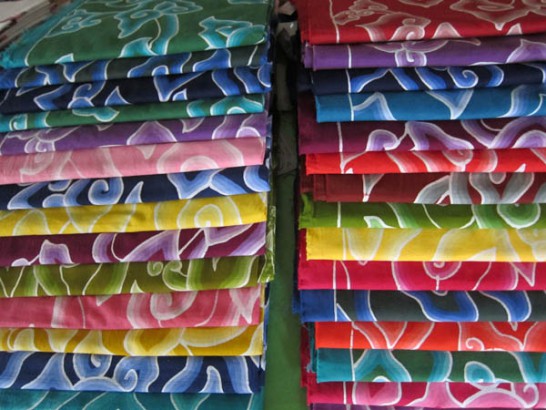Cirebon, West Java: The hunt for colourful Batik
updated the 7 October 2015 à 00:03
Discover the stylish, authentic Batik from the city of Cirebon made by the fifth generation of maestros.
A piece of real Indonesian batik cloth is the one drawn by hand using canting – a pen-like tool made of wood and brass to let the melted wax flow in a very fine line to create meticulous details on the fabric. Colouring uses dye-resist technique. The more colours used the more times the process is repeated before the cloth is finally dried. A piece of authentic Indonesian batik might take up to one whole year to finish depending on the pattern the the number of colours. This technique of creating Batik Tulis (hand-drawn Batik) is regarded by UNESCO as an Intangible Cultural Heritage.
Unlike the ones from land-bound Yogyakarta or Solo (Surakarta) – both in Central Java as well – batik from Cirebon fall into the coastal category. They are more colourful, and patterns will include flowers, butterflies, clouds, sea creatures, and mythical animals. Historically, coastal batik are tradesmen’s, while inland batik are for the royals.
Until today, the small city of Cirebon is the centre for coastal batik trades. Stores are clustered in Trusmi area. Sadly, workshops are dying since the younger generations do not show much interest in traditional batik.
Among the very rare family-run workshops in Trusmi, Cirebon is Hajjah Ninik Ichsan’s. Approaching 70 years old, she is the fifth generation of batik artists. Her gallery is not big, and her collection is limited. Everybody knows Ichsan’s place so well it does not even have an address. The brighly-lit workshop behind the gallery is always busy. The artists and workers only make Batik Tulis and draw authentic Cirebon patterns. They take no shortcut.
Megamendung is the most common pattern from Cirebon. It depicts heavy clouds in bright colours. The form of the clouds is similar with the ones found in antique Chinese artifacts. This confirms the long history of Cirebon – how the most prominent Muslim leader and ruler married a princess from China.
The price of a piece of Megamendung batik cloth depends on the size of the clouds, and how many gradients of colour – starting from two to seven, or even ten. Designer Julien Macdonald used blue Megamendung pattern for his collection in London Fashion Week Spring/Summer 2012.
Hajjah Ninik Ichsan welcomes visitors to her place as respected guests. She will sit with them in the living room, talk to them, and offer them snacks and tea. The price of Ichsan’s batik will start from US$15, for a simple two-coloured Megamendung pattern, to soaring US$3,000. Elite clienteles are collectors, and many of them are European and Japanese. “They simply ask me to make what I think is good for them, and they never question the price. They respect batik as a fine art,” Ichsan smiled.
Ve Handojo
Photos: Ve Handojo



